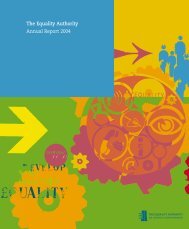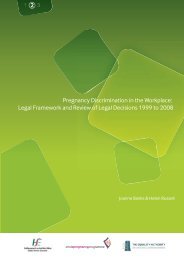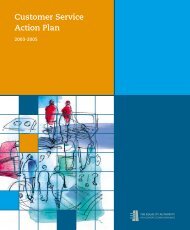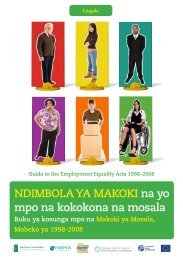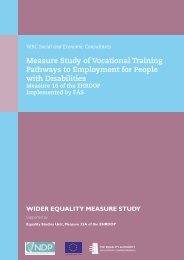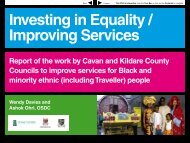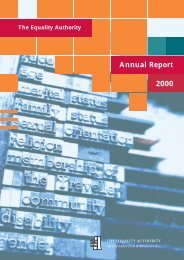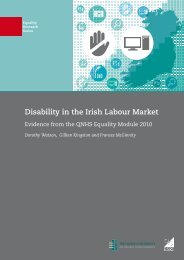Pregnancy and Employment: A Literature Review - Crisis Pregnancy ...
Pregnancy and Employment: A Literature Review - Crisis Pregnancy ...
Pregnancy and Employment: A Literature Review - Crisis Pregnancy ...
You also want an ePaper? Increase the reach of your titles
YUMPU automatically turns print PDFs into web optimized ePapers that Google loves.
<strong>Pregnancy</strong> <strong>and</strong> <strong>Employment</strong>: A <strong>Literature</strong> <strong>Review</strong><br />
4.4 Conclusion<br />
In this chapter we have examined evidence on the cost of time out of the labour market around the time of<br />
childbearing on women’s subsequent occupational position <strong>and</strong> earnings. It is clear from the research across a<br />
range of countries that a quicker return <strong>and</strong>, especially, resumption of employment with the previous employer<br />
are very important factors in avoiding deterioration in working conditions. Coverage by maternity/parental-leave<br />
legislation is crucial in this respect. Women who did not qualify for job-protected leave, either because they failed<br />
to meet eligibility requirements or because universal policies were not in place, were more likely to experience<br />
long breaks in employment <strong>and</strong> were thus vulnerable to downward occupational mobility on their return to work<br />
<strong>and</strong> also to lower earnings. The evidence of occupational downgrading is strongest in studies of women who<br />
have spent a long period out of the labour market <strong>and</strong> among women who moved employer. The review of return<br />
decisions in Chapter 3 highlighted that it is women with higher educational <strong>and</strong> labour-market resources who are<br />
likely to return more quickly to employment. This has led a number of commentators to suggest that experiences<br />
around childbirth lead to a polarisation of women in the labour market (McRae, 1993; Macran et al, 1996). Research<br />
in Britain suggests that transitions from full-time to part-time work that involved employer moves were particularly<br />
detrimental to occupational status <strong>and</strong> earnings. The initial descriptive statistics outlined in chapter 1 highlight that<br />
many women in Irel<strong>and</strong> take up part-time work when they have children. If the reduction in hours that mothers<br />
desire can be facilitated without moving employers then women are much less likely to experience these negative<br />
outcomes.<br />
The figures from statistical analyses of pay gaps both between men <strong>and</strong> women <strong>and</strong> between mothers <strong>and</strong> nonmothers<br />
suggest that significant penalties are attached to having accumulated less work experience <strong>and</strong> to having<br />
spent time out of the labour market. Previous research by Russell et al (2002) suggests that a number of supports<br />
are needed for women who take longer periods of leave to care for children if they are to avoid serious declines in<br />
job status. These supports include access to retraining <strong>and</strong> skills refresher courses on an equal footing with other<br />
job seekers: the provision of more flexible training options; employer strategies for successful reintegration, such<br />
as mentoring, <strong>and</strong> improved access to information (Russell et al, 2002).<br />
The importance of maintaining the link with the previous employer for post-birth outcomes underlines the<br />
importance of ensuring that pregnant women are given access to the rights they are entitled to under law. The<br />
description of discriminatory behaviour outlined in Chapter 2 often points to a denial of these rights, which may<br />
have long-term career consequences for women.<br />
PAGE 45




